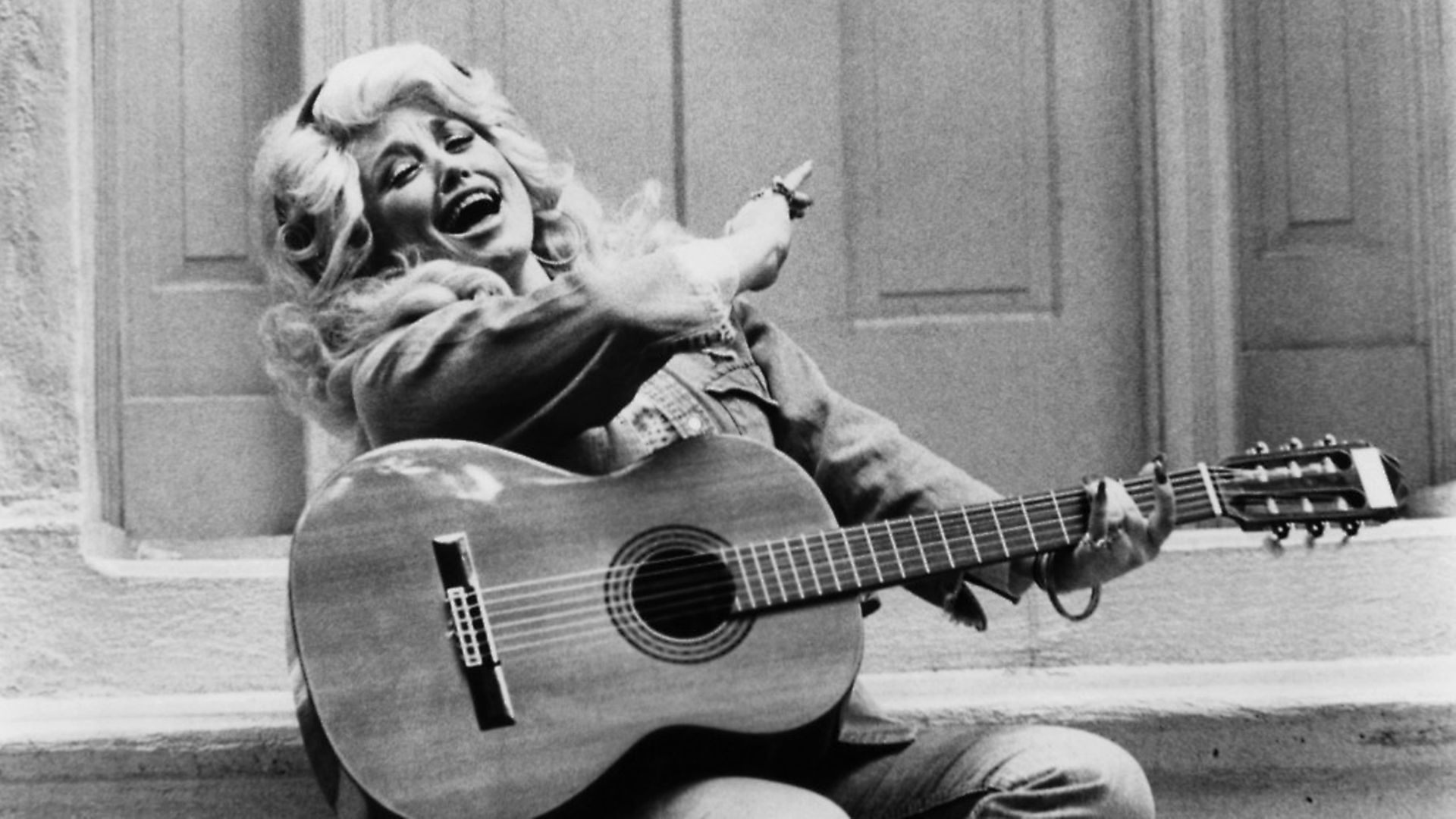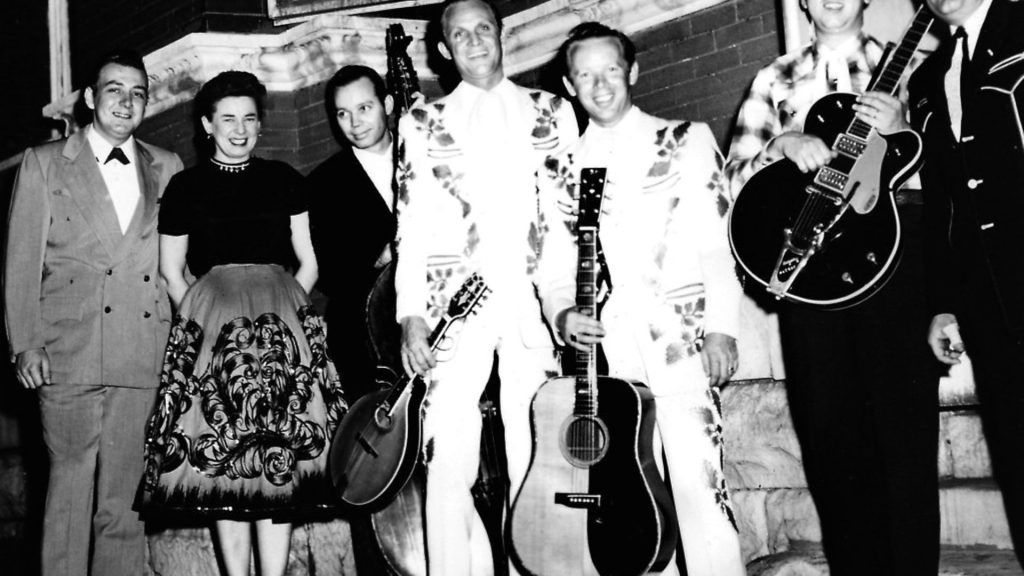
The spiritual home of white America’s very own music genre, Nashville is country music. But it’s not always been all about rhinestones and 10-gallon hats, as SOPHIA DEBOICK reports.

Nashville is built on contradictions. Its native peoples were forced out as the French established a fur trading post there and settlers built Fort Nashborough, but it still had important Native American allies during its frontier days. Strongly pro-Union, Tennessee nevertheless became a secessionist state and witnessed some of the worst fighting in the Civil War. As ‘Music City’ it has been no less paradoxical.
Country is framed as the authentic music of white America, with Nashville as its home, yet the city’s first musical export – the Fisk Jubilee Singers – were a black choir touring the world to raise funds for a college for freed slaves. Country music’s relationship with race has been vexed ever since. As both a religious city – the centre of contemporary Christian music, and home to many Methodist and Baptist organisations – and a hedonistic one, it has constantly pulled between social conservatism and liberalism. And while recording in Nashville is meant to lend a unique authenticity, the industry there is as keenly interested in the business of making money as touching the soul and has frequently stifled the artistic evolution of the genre.
While fiddlers from Texas and Georgia made the very first country records and ‘the Big Bang of Country Music’ came with a legendary set of recording sessions at Bristol, Tennessee, Nashville had become the undisputed centre of country music by the mid-1940s. One thing above all was responsible for that – the Grand Ole Opry. A radio programme based on a hillbilly barn dance, it launched from WSM Radio’s downtown Nashville studio in 1925, but by 1943 it had evolved into a show with a live audience and moved to the nearby Ryman Auditorium, built in 1892 as the Union Gospel Tabernacle.
The Ryman would be the Opry’s home for over 30 years, and it would become an institution, vital to the careers of everyone from Hank Williams to Patsy Cline, Johnny Cash to Dolly Parton, as it began nationwide radio broadcasts from 1939, and TV broadcasts from 1955. Although it had competition from rival show, Louisiana Hayride, the Opry was instrumental in taking country to the whole of the US and brought a strong national focus to Nashville.
The host of the Opry from 1939 was Roy Acuff – the future ‘King of Country Music’, and a vital figure in the development of Nashville into the country music city. In 1942 he teamed up with Fred Rose, writer of such country classics as Blue Eyes Crying in the Rain, and opened the Rose-Acuff Publishing Company on Nashville’s Eighth Avenue.
It was one of the first music publishers in the city. Castle Studios, the first recording studios in Nashville, were opened by WSM Radio five years later to allow the stars of the Grand Ole Opry to record locally rather than having to go to New York or Chicago. First located on the WSM premises, Castle’s permanent home would be a converted dining room at the nearby Tulane Hotel, and it was there that Hank Williams recorded his debut, Move It On Over, and the crossover hit, Lovesick Blues – a country No. 1 and a ‘Most Played’ charts Top 25 hit. The Quonset Hut Studio, later taken over by Columbia Studios, followed in 1954, situated on what would become known as Music Row, and RCA’s Studio B would open a two-minute walk around the corner three years later.
By the time the 1950s dawned, Nashville was a thriving music city – a hit factory that drew songwriters and musicians from all over the South. But there were threats on the horizon. At the tiny Sun Studios 200 miles away in Memphis, Elvis made history in 1954 with That’s All Right, promptly following it up with Blue Moon of Kentucky. Many country fans considered the latter a disrespectful take on Bill Monroe’s classic bluegrass song, and when Elvis performed at the Opry in October 1954, he got a lukewarm reception and no invitation to return.
By 1957, rock ‘n’ roll had exploded and Jerry Lee Lewis’ Sun single Great Balls of Fire signalled wholesale iconoclasm. Nashville’s reaction was to move towards the middle ground, and under the headship of Chet Atkins, RCA Victor’s Nashville division developed the ‘Nashville Sound’, ditching the earthy for a crossover style characterised by lusher production. Atkins explained that this was ‘the sound of money’, and the 1960s and early 1970s would be a story of unbridled success for country, even in the face of rock ‘n’ roll, with the rise of the great women of the genre – Cline, Parton and Tammy Wynette – being just a small part of that story.
When Cash, one of Sun’s original artists but already a country legend, kicked out the footlights at the Grand Ole Opry in a fit of amphetamine-induced rage in 1965, it signified the more anarchic forces under country’s perky surface that would erupt a decade on.
The Nashville record companies’ system of tight artist control brought country to its commercial height in 1975, when six singles hit No. 1 on both the Hot Country Singles and Billboard Hot 100 charts, but the dogged pursuit of profit was at the cost of artistic innovation. Against this background the ‘Outlaw’ or ‘Austin Sound’ emerged, as a band of artists pursued their own path, embracing a grittier sound and look and politics far to the left of country’s conservative norm. Willie Nelson was already a Nashville face, having written Cline’s Crazy and joined the Grand Ole Opry in 1965 but, disillusioned, he moved back to his native Texas in 1971, releasing two rock-tinged albums before his seminal Red Headed Stranger (1975). A musically sparse story of murder and redemption, it pared country back to the bare roots.
Nelson took the focus to Austin, but other Outlaws were still very much involved in the Nashville scene. Cash was the original outsider – the ‘man in black’ who was an activist for Native Americans and prisoners – but his 1970 performance of Kris Kristofferson’s hymn of the down and out, Sunday Mornin’ Comin’ Down, on The Johnny Cash Show, broadcast from the Ryman, saw him anticipate ‘Outlaw’ once again.
Kristofferson himself, a former Army helicopter pilot, passionate anti-war activist, and natural Outlaw, had spent the late 1960s doing odd jobs in Nashville before Cash got him his break. Waylon Jennings, meanwhile, renegotiated his contract with RCA Nashville and ditched any suggestions of a clean-cut image to go full-on country-rock on Lonesome, On’ry and Mean (1973), bemoaning the “Rhinestone suits and new shiny cars” that characterised Nashville on his 1975 single Are You Sure Hank Done It This Way? The 1976 compilation Wanted! The Outlaws, and Nelson, Cash, Jennings and Kristofferson going on to form the supergroup The Highwaymen in the 1980s consolidated the Outlaw legend. Although three of them were Texas-born, Nashville had been formative for all four.
Despite the incursions of the Outlaws, the mainstream ‘countrypolitan’ sound persisted and achieved massive mainstream crossover in the 1990s through a raft of strongly adult contemporary-flavoured mega-hits. Garth Brooks’ three Hot Country chart No. 1s, If Tomorrow Never Comes, The Dance and Friends in Low Places, earned him a place at the Grand Ole Opry in 1990. He went on to stratospheric success, selling more albums in the US than anyone but the Beatles. Billy Ray Cyrus got a Billboard Hot 100 No. 4 and an international hit with Achy Breaky Heart (1992) on Mercury Nashville. Shania Twain’s Come On Over (1997), recorded all over Nashville and beyond, emerged as the ultimate country cross-over album – the biggest-selling country album of all time globally and the best-selling album of the 1990s, it shifted some 40 million copies.
The following year Faith Hill broke through with This Kiss, a Hot 100 No. 7 and country No. 1., and the Dixie Chicks’ Wide Open Spaces, produced by major Nashville names Blake Chancey and Paul Worley, would go on to sell 12 million copies, a record for a country music group. But anxieties rose that country had become just too pop, and time and again country has proved itself a genre more obsessed with ‘genre’ than any other.
Country flavours on the recent pop charts – from Lady Gaga’s Joanne LP (2016) to Mark Ronson and Miley Cyrus’ Nothing Breaks Like a Heart this year – has provoked another of the scene’s regular identity crises. When Lil Nas X’s Old Town Road became the longest-running No. 1 in US chart history last week, the genre-straddling song – mixing a trap beat, a twanging banjo line, a Nine Inch Nails sample and a Billy Ray Cyrus vocal – proved that country, for now at least, connotes cool. When Billboard removed Old Town Road from their Hot Country Songs chart earlier in the year, saying “it does not embrace enough elements of today’s country music”, it sparked accusations of racism, and reignited the controversy when Beyoncé’s Daddy Lessons wasn’t even considered for Best Country Song or Country Solo Performance at the 2016 Grammys.
Lil Nas X has said his song “is country trap. It’s not one, it’s not the other. It’s both”. Genre is in the eye of the beholder, and while Nashville had prided itself on being country’s gatekeeper, every two decades or so its authority has been challenged. Paradoxically, country music always emerges the better for it.










